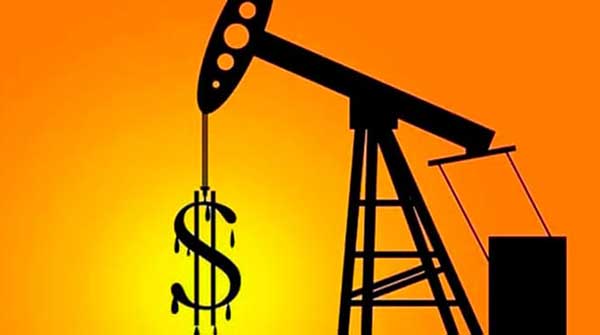The price of oil could end up anywhere between US$70 to US$121
 Projecting energy prices into the New Year is an ominous task. Professionally, it could be hazardous. Josh Rubin, in his year-end piece in The Toronto Star, rightly says it ‘can be a bit like aiming at a dartboard.’
Projecting energy prices into the New Year is an ominous task. Professionally, it could be hazardous. Josh Rubin, in his year-end piece in The Toronto Star, rightly says it ‘can be a bit like aiming at a dartboard.’
Yet everyone expects poor scribes to come out with a projection for the coming year. This scribe, too, is jumping into the fray. To be fair, I can’t avoid it.
Several factors are in play. The looming global recession, the ongoing Ukrainian crisis, the state of Chinese crude consumption and the resurgence of COVID in China – the world’s largest crude consumer – will all impact oil markets in the New Year.
Yet, pundits are baffled. It is not the fundamentals, the demand-supply equation, that is controlling the energy markets today. It is the role of geopolitics. The war in Ukraine, the western price cap on Russian output and its resultant squeeze on crude supplies from Moscow will continue to hang their shadow on markets this year.
Thus no one can be sure of the oil price trajectory in 2023. At best, one could guesstimate.
Ed Morse, Citi’s global head of Commodities Research, projects the average Brent at US$80 and WTI at US$75 a barrel this year. While on Yahoo Finance Live, he said, “our base case, by the way, is that oil demand growth next year is going to be around 1.2 or 1.3 million barrels a day. And our base case is that supply will be growing by twice that amount over the next year, a good bit of that coming from the Western Hemisphere, from the U.S., Brazil, Canada, Guyana, Argentina, maybe Venezuela and even Mexico.”
Natasha Kaneva and the Global Commodities Research team at JP Morgan are more bullish. “Our forecast of US$90 Brent in 2023 rests on the view the OPEC+ alliance will do the heavy lifting to keep markets balanced next year. We expect supply to grow at 30 per cent above the pace of demand in 2023 as Russian production fully normalizes and a combination of conventional (Brazil, Norway, Guyana) and nonconventional projects (U.S., Canada, Argentina) supply an additional 1.6 million barrels per day.”
As for Tom Kloza, the Global Head of Energy Analysis, and Denton Cinquegrana, the Chief Oil Analyst at OPIS, “the 2022 average price for WTI looks to be right around US$94.50/barrel. We suspect 2023 will see a price only slightly below this number, with US$90/barrel a reasonable prophecy for WTI, with US$95 to US$96/barrel likely for Brent. Precisely how high these numbers move above the average will depend on the successful reopening of China and the ability of western countries to avoid a significant recession.”
Jay Hatfield, CEO at Infrastructure Capital Advisors and portfolio manager of the InfraCap Equity Income ETF, says he expects “oil to trade in the US$80 to US$100 range while the Ukrainian war continues,” adding that “China oil demand likely to recover as it emerges from zero-COVID lockdown policy.”
Eric Nuttall, a partner and senior portfolio manager at Ninepoint Partners LP, told the Financial Post that oil prices would return to US$100 per barrel in 2023.
As reported by Alex Kimani of Oilprice.com, the Bank of America (BofA) is predicting that Brent could quickly go past $90 per barrel on the back of a dovish pivot in the U.S. Federal Reserve and a “successful” economic reopening by China.
BofA is of the view that Brent prices, currently trading at US$77.93, will average US$100 per barrel in 2023 thanks to Chinese oil demand recovery on a post-COVID reopening coupled with a drop in Russian supplies of about one million barrels per day (bpd). According to the investment bank, the Organization of Petroleum Exporting Countries and its allies in the OPEC+ are likely to fully implement a two million bpd output cut in a bid to boost oil prices.
A report from Enverus Intelligence Research (EIR) is warning of a return to US$100 prices for crude oil during 2023. Citing OPEC supply management and the implementation of sanctions on Russian oil, EIR projects its price deck for Brent crude will be pinned above the US$100/barrel level despite near-term recession concerns.
Respected analyst Daniel Yergin, however, believes that crude markets will continue to maintain their volatile streak in 2023. Oil prices could end up anywhere from US$70 to US$121 a barrel in 2023, Yergin, the vice chairman of S&P Global, told CNBC. “Our base case for 2023 is US$90 for Brent, but you have to look at other cases.”
Yergin’s projection of crude prices, ending up anywhere between US$70 to US$121, explains it all. With too geopolitical variables, it is virtually impossible to go for a definite figure. Yet most, including this scribe, agree it could be somewhere around $90 a barrel in 2023.
Toronto-based Rashid Husain Syed is a respected energy and political analyst. Energy and the Middle East are his areas of focus. Besides writing regularly for major local and global newspapers, Rashid is also a regular speaker at major international conferences. He has provided his perspective on global energy issues to the Department of Energy in Washington and the International Energy Agency in Paris.
For interview requests, click here.
The opinions expressed by our columnists and contributors are theirs alone and do not inherently or expressly reflect the views of our publication.
© Troy Media
Troy Media is an editorial content provider to media outlets and its own hosted community news outlets across Canada.


